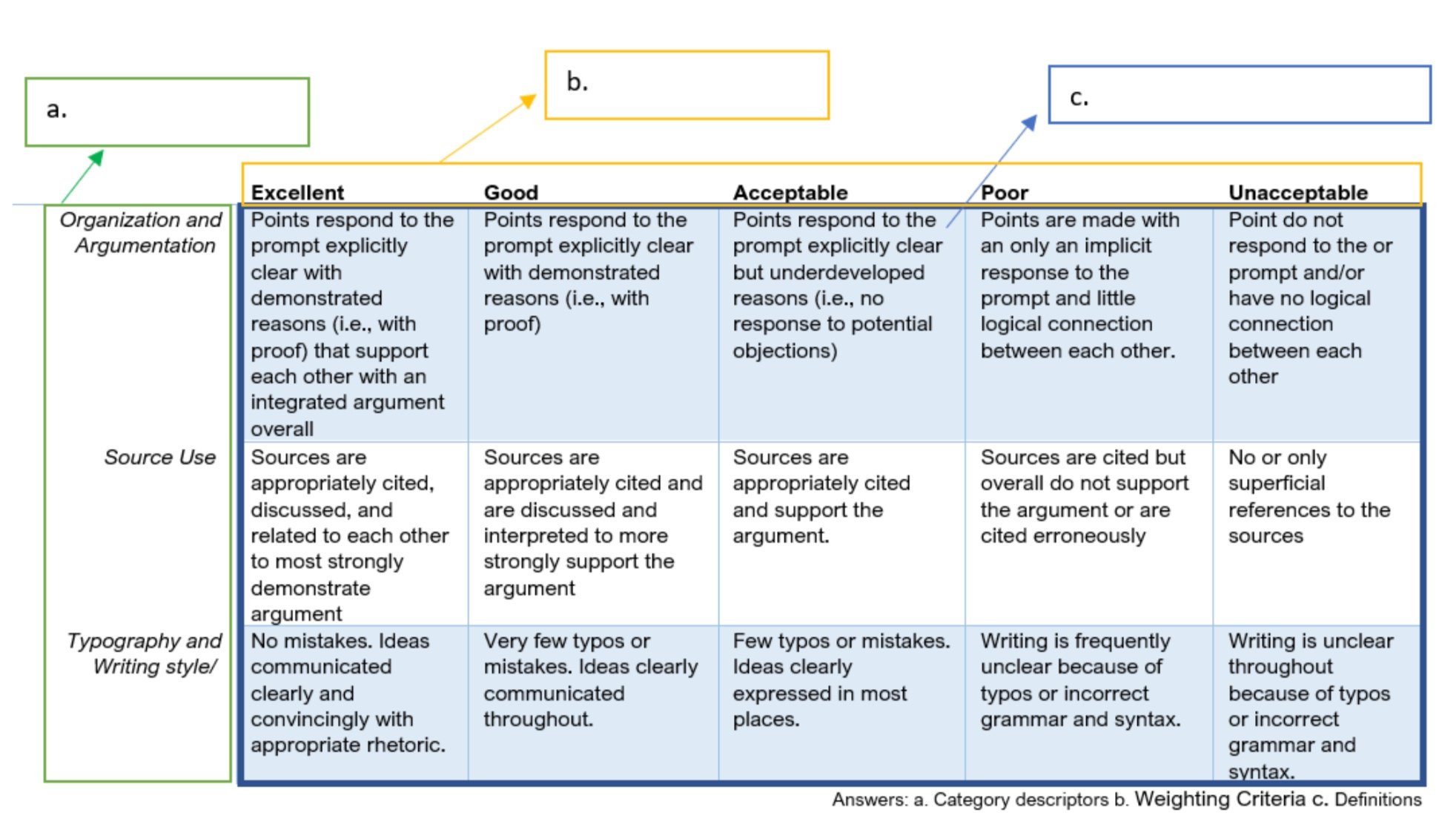What is a rubric?
A rubric is a grading guideline usually created by an instructor to follow in the student’s assessment of a specific assignment. Getting to know how your instructors will be assessing your assignment is the first step to a successful essay. One of the assessment tools that instructors might choose to apply in class is called Rubric. A rubric is a grading guideline usually created by an instructor to follow in the student’s assessment of a specific assignment. More recently, it has become an effective assessment tool to create clear communication between instructors and students. Therefore, learners can understand their instructor’s expectations for an assignment at the outset as well as fully comprehend the purpose and value of its components.
Moreover, a rubric is a helpful tool to communicate detailed information about the assignment you are going to write; it is usually divided into several categories and covers all the requirements that an instructor can distinguish between the higher to the lower parts of the grading range. These categories might include the writing style (APA, MLA, Chicago, etc.), adequate documentation (articles, research, citations, etc.), topics that should be included, the policy on plagiarism, and/or any other information that an instructor may find necessary to share with the students.
Why should I read a rubric?
Reading your assessment rubric will help you understand what your instructor expects to see in your assignment; it will also help you to enhance your performance as you will be able to meet these expectations. Besides, you can monitor your progress and become aware of the quality of your work. Another reason for you to read your assessment rubric is that it will certainly enable you to understand your instructor’s feedback better, which can assist you in your improvements for the next assignment.
How do I read a rubric?
A rubric can be analytic (process-oriented) or holistic (product-oriented); it will depend on the instructor’s goals for the assignment. Analytic rubrics normally provide a consistent system to assess an assignment and are divided into three essential parts that will be presented below.
Start reading your assessment rubric by checking the category descriptors which are usually on the left of the rubric’s table. The category descriptors indicate the elements that will be assessed in the assignment. In the example below, there are three elements in the category descriptors ‘organization and argumentation’, ‘source use’, and ‘typography and writing style’.
After that, check the weighting criteria, which will show you how your performance will be assessed. The weighting criteria are usually placed on top of the rubric table where the performance is presented on a number scale, for instance, percentage %, numbers 1, 2, 3, or as you can see in the example below ‘excellent’, ‘good’, ‘acceptable’, etc.
Finally, look for the definitions, they will reveal a detailed explanation of what can be achieved per category. Reading the definitions for each category will enable you to write an essay that will meet your instructor’s goals.
In the below example you will read an analytic rubric. Can you identify the three parts presented above in this assessment rubric?
Try to use a rubric as a checkpoint before handing in your next assignment!





















